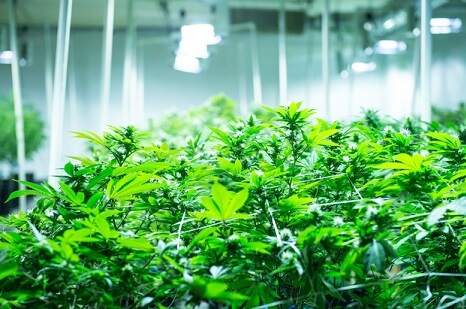Growing cannabis has the same risks as growing tomatoes or potatoes, at least as far as cultivation goes. But beyond cultivation there is a whole labyrinth of elevated risk associated with the popular drug.
The real risk lies in the product – the cannabis itself. Product liability is a huge element behind insuring medical and recreational-use cannabis and it should be at the forefront of industry discussion ahead of Canada’s planned legalization in 2018, according to Mike Aberle, senior vice president, sales and marketing at Next Wave Insurance Services, LLC.
“Whether you’re growing tomatoes or cannabis, the agricultural risks are the same. But with cannabis cultivation, some risks start to elevate, such as fire and theft,” Aberle told Insurance Business. “Then there’s the whole issue of product liability. That can come from labelling issues, product homogenization, contamination, co-mingling – from all manner of things. We need to look at who is growing the cannabis and whether they professionally trained in agriculture at a pharmaceutical level.
Search and compare insurance product listings for Cannabis from specialty market providers here
“We need to think about whether the product been contaminated or co-mingled at the grower’s facility or during transportation. We are also still learning about what pesticides and herbicides can be used on the product and what period of time is needed prior to harvest in order to flush excess chemicals out of the system. There are so many issues to consider as the industry grows and expands.”
Underwriting for medical and recreational cannabis can be quite diverse because of the different types of people ingesting the product and their reasons for doing so, according to Aberle. With medicinal users, underwriters have an additional layer of authority in the doctor or medical adviser. This is not the case for recreational users.
For recreational users, insurers have to consider the additional problem of where people will safely consume the product. People using cannabis in public might cause public safety issues or nuisance within a community. This could be solved by on-site consumption facilities, said Aberle.
“If you permit on-site consumption facilities, it puts recreational cannabis users in one place, like a bar,” he commented. “This makes it less likely that they will cause public safety issues. The police will know where those bars are and will be able to keep a track of good and bad facilities. It’s not about advancing the use of marijuana, it’s about safeguarding our communities so people are not causing public nuisance. Having on-site consumption facilities allows you to gather recreational users in a safe environment and eliminate or minimize public risk issues.”
The exact guidelines for cannabis legalization in Canada are yet to be determined, making this an exciting but challenging time for insurers. Aberle added: “Canada is the first country progressively thinking about how to move the war on drugs forward. It’s a very exciting time.”
Hear more from Mike Aberle at the upcoming Cannabis Cover Masterclass, which is taking place on October 10, 2017 in Toronto at the St. Andrew’s Club & Conference Centre. The event will feature a host of leading insurance influencers from the likes of Next Wave, CUBIC Health, and HKS Strategies, bringing together key perspectives on regulation, cannabis-specific risk, business growth and how legalization could affect the insurance market. Visit cannabiscover.ca for a full list of speakers, the full agenda and to register for the event.
Related stories:
It’s high time brokers learn the cannabis industry
So marijuana is going to be legal – but what if your clients want to drive while high?


